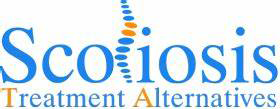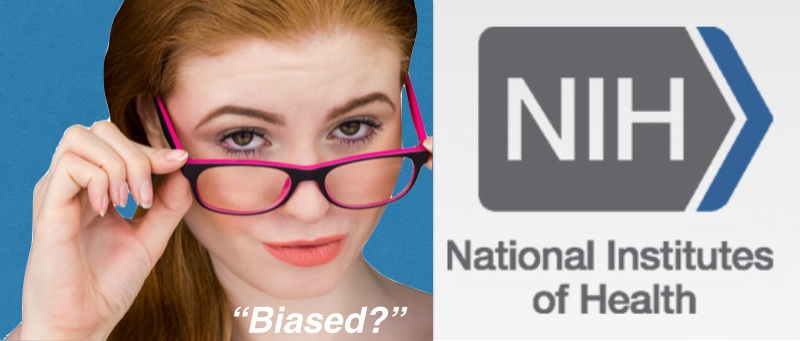In January of 2011 the National Institute of Health launched a major four year study to investigate the long term outcomes in adults with scoliosis between patients who have undergone surgery and those who have chosen other non-operative treatments. The study is to examine treatment of scoliosis in terms of pain reduction, functional restoration, physical appearance and increase in quality of life for patients in order to provide a predictive model of who would benefit from either approach.
This is a very important study since a half a million U.S. adults have scoliosis. Statistics also show that 40% of them feel more pain each year because over time the unbalanced curvatures of the scoliosis spine begin to degenerate. When this happens the degenerative changes in the discs and other spinal joints begins to cause people to experience back and even leg pain.
Conventional Scoliosis Treatment
Finding which solutions are best is crucial since U.S. spends nearly $86 billion dollars each year on conventional treatment for adults with scoliosis on such as pain management with medications, epidural block injections, hard braces and physical therapy at a mean cost over a 2-year period of $10,815. (1)
A small percentage of adult scoliosis patients seek relief with such as chiropractic, acupuncture, massage but these also only provide temporary relief if the underlying problem behind scoliosis is not addressed.
When these solutions don’t work doctors will often recommend back surgery but past studies on scoliosis surgeries have shown that there was no change in the frequency of peak pain after operation and the number of patients who were pain-free after surgery was notincreased. (2)
With the average cost for a Harrington rod back surgery (implants responsible for 29 %, intensive care unit and inpatient room costs were 22%, operating room costs were 9.9% and bone grafts 6% of the costs(2)) the total cost can reach upwards of $120,000! (3) It is in no wonder why the government is motivated to do this study since medical costs for scoliosis have escalated so much in recent years.
Alternative Scoliosis Treatment
That is why effective alternative scoliosis treatments that work to correct the root factors of scoliosis, like SpineCor Bracing for Adults, Active Release Techniques, Schroth Methods and scoliosis rehabilitation therapies have become increasingly popular among patients.
Unlike a rigid brace, Spinecor uses a rotational 3D “Corrective Movement” which has been shown to be effective in reducing scoliosis curvatures in adolescents. Spinecor is a dynamic system of elastic bands which uses gentle forces to change posture and movement patterns over time. It can easily be worn under the clothes, during exercise and at work. Adults often experience immediate pain relief when a SpineCor brace is fitted appropriately.
Studies show adult scoliosis has a significant potential to be progressive in nature and being a major contributor to chronic pain, radiculopathy and neurogenic claudication due to the long standing dysfunction of the motion segments of the spine caused by the associated chronic muscle and connective shortening. These tightened muscles and ligaments are then able to restored toward normal lengths and function with very specific and gentle manual therapies such as Active Release Techniques.
Due to the abnormal posture and muscle recruitment patterns associated with adult scoliosis, adult programs are often supported with specialized scoliosis rehabilitation programs such as Schroth Method. These self help tools are equally as important to the patient’s long term success in managing their scoliosis so that they can learn how to keep their scoliosis from causing pain over their lifetime.
Is The NIH Scoliosis Adult Study Biased?
Unfortunately, despite the fact that we are one of the premiere alternative scoliosis treatment provider groups in the country with 15 offices across the US, we have not been invited participate in this important study. Also, the numerous calls we have placed to the Investigators of this study inquiring how we can participate have not been returned. To my knowledge no other leaders in the alternative treatment of scoliosis have been invited to participate either.
Adults who suffer from pain related to their scoliosis are tired of being medicated to mask the symptoms. Finding better alternative solutions for scoliosis treatment in adults is crucial to not only contain the costs of treatment in dollars but also to curb the costs in terms of human suffering.
There are six centers across the U.S. are currently involved in the government’s adult scoliosis study. All six centers are orthopedic hospitals. Some might think that this would indicate that the study has a built in bias toward surgery, as orthopedic centers are NOT know for their openness to alternative treatments for scoliosis. Isn’t that a bit like the fox guarding the hen house?
In fact, the web article that I read about the study had a video attached that clearly stated that surgery WAS the best option for adults with scoliosis. This video also showed a woman in her sixties who had pain related to scoliosis who had back surgery and now is able to knit without pain. So much for the impartiality of the study.
How can a study that is supposed to evaluate the effectiveness of nonoperative and operative treatments be considered impartial when they only use surgical centers for their study?
Doesn’t it make sense that a study designed to compare the results of non-surgical scoliosis treatments options with surgical treatment would include some of the best alternative treatments centers available in order to be able to report a fair comparison of both sides of the debate?
We’d love to know what you think. Comment Below:
1. The costs and benefits of nonoperative management for adult scoliosis. Glassman SD, Carreon LY, Shaffrey CI, Polly DW, Ondra SL, Berven SH, Bridwell KH. 2. Results of surgical treatment of adults with idiopathic scoliosis PD Sponseller, MS Cohen, AL Nachemson, JE Hall and ME Wohl The Journal of Bone and Joint Surgery, Vol 69, Issue 5 667-675, Copyright © 1987 by Journal of Bone and Joint Surgery, Inc 3. Study Shows Areas for Potential Cost Reduction in Adolescent Scoliosis Correction Written by Laura Miller | September 24, 2010 4. Scoliosis Surgery, the Untold Truth Scoliosis Correction Center
